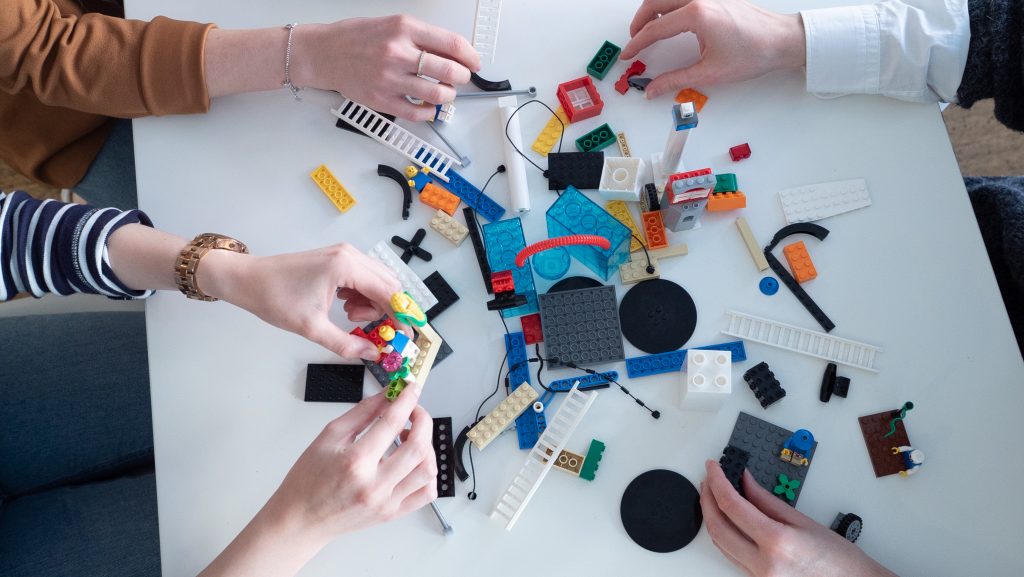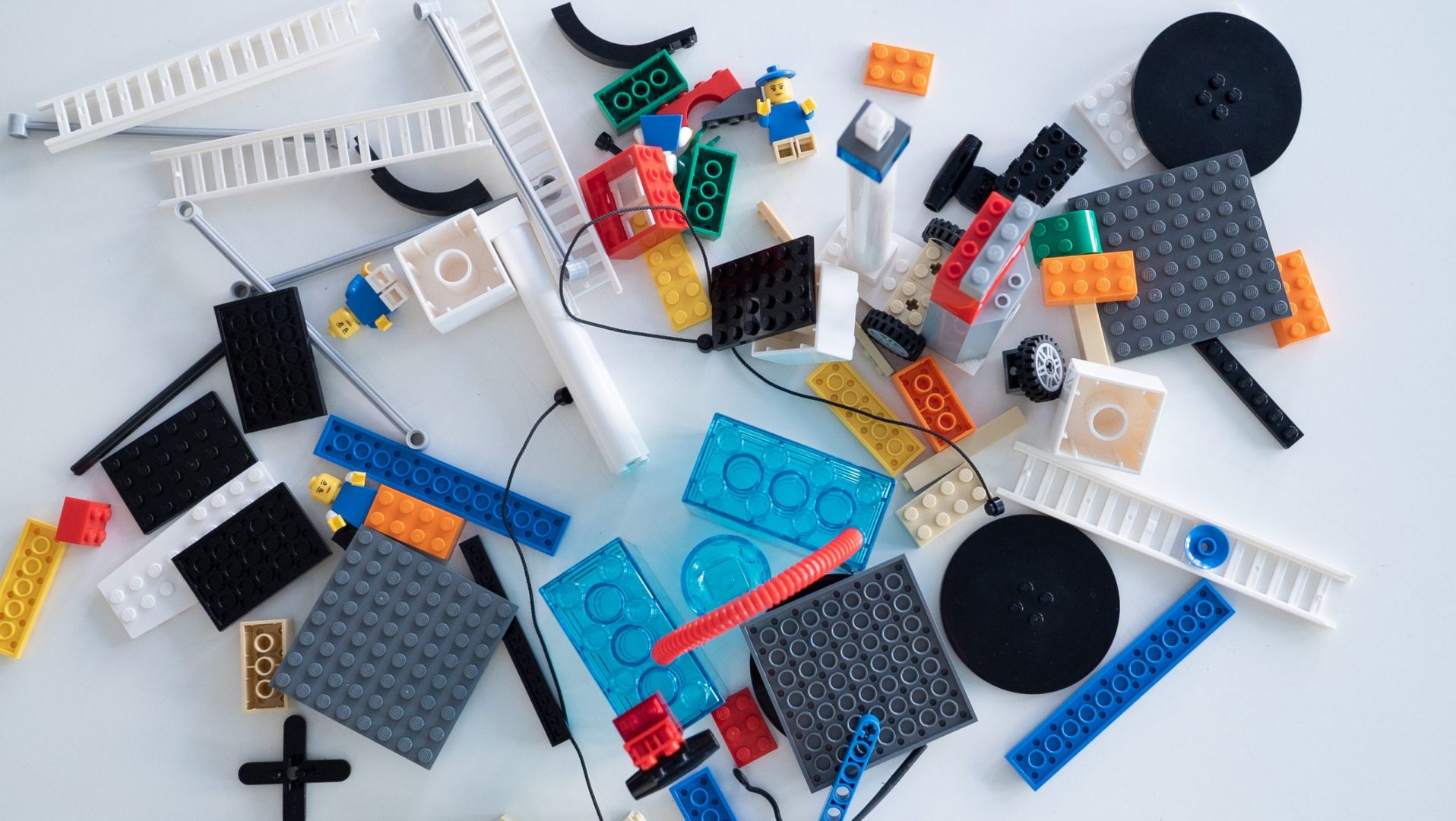From the idea to the construction
In the case of new developments or redesigns of digital living environments, both entrepreneurs and established economic actors face various design-specific challenges. The path from the initial idea to the concrete visualisation can be rocky. LEGO® SERIOUS PLAY® opens up diverse potentials to complement the established wireframing process. The agile method increases transparency, makes hurdles visible and enables even employees who are not technically or design-savvy to contribute their know-how to the development process at an early stage.
LEGO® SERIOUS PLAY® has proven itself as a varied, complementary and innovative problem-solving, creativity and workshop tool. As a human 3D printer of the cognitive, the approach allows for the rapid construction of concepts, ideas and visions. Thoughts can be visualized, changed and adapted playfully.
The advantages of this approach are primarily in the haptic component, the playful moment, the illustration of the abstract, the fun in doing it and the possibility to change together again what has already been built up. In this way, problems, concepts or designs that are difficult to grasp – and which are often initially still dominated by heterogeneous ideas – can be sketched out as drafts; individual visions thus become shared structures of the digital future. However, this traditional approach can now be alienated to a certain extent in order to make the process of wireframing more agile and participatory.

From Wireframing to Agile LEGO® Framing
If, for example, an existing but outdated software is to be brought up to date, various challenges arise: Which elements should be retained, which should be added? Users express different ideas about the future of the application or UI/UX tastes vary etc.
When designing new solutions, it is therefore crucial to involve all relevant actors in the early stages of the process of identifying needs in order to make any subsequent processes lean and efficient – ideally a consensus, or at least a shared construction of reality about the future of the digitality to be designed. LEGO® SERIOUS PLAY® can prove to be a helpful and agility enhancing tool in this context. Within one – or more – workshops, the approach – also for participants not interested in design or technology – allows them to get involved in the design of the future user interface. By playfully sketching and assembling the bricks, heterogeneous ideas can be visualized and discussed; using the setups in the sense of pre-digital proto-wireframes as templates for the subsequent digital ones. This approach not only empowers the (non-design) participants of the workshops and allows for lower participation hurdles, but also increases the acceptance of the wire frame models to be developed. The procedure thus increases the shared understanding of what is to be developed and also creates a new degree of transparency between customers and service providers as well as actors within the commissioning organisation itself.
Ludwig Hanisch
Ludwig Hanisch is an innovation consultant at HYVE and is currently writing his dissertation on the relationship between digital culture and human action.



